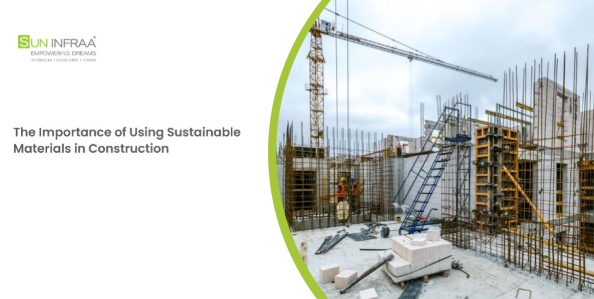The Importance of Using Sustainable Materials in Construction
As the world becomes more aware of environmental issues, the construction industry is also changing. One of the biggest steps in this direction is using sustainable materials. These are building materials that are eco-friendly, safe, and long-lasting. Choosing sustainable options helps protect the environment and creates healthier spaces for people to live and work in.
Let’s explore why using sustainable materials in construction is so important and how it benefits both people and the planet.
1. Protecting the Environment
Traditional construction materials often cause harm to the environment. Some require large amounts of energy to produce, while others lead to pollution or waste. Sustainable materials, on the other hand, are made in ways that reduce harm to nature.
For example, many eco-friendly materials come from recycled, renewable, or natural sources. They require less energy to produce and often create less waste. This helps lower the carbon footprint of the building project and reduces the overall impact on the planet.
2. Reducing Waste and Pollution
Construction work produces a large amount of waste—old bricks, wood, metal, and more. Sustainable materials are often recyclable or biodegradable. This means they break down naturally or can be reused in future projects, instead of ending up in landfills.
Some materials also release harmful chemicals during or after construction. These can affect the air quality and harm people’s health. Sustainable materials are typically non-toxic and safe, making the indoor environment cleaner and healthier.
3. Saving Energy and Money
Many sustainable materials help save energy after the building is complete. For example, good insulation materials reduce the need for heating and cooling systems. Energy-efficient windows and roofing keep the indoor temperature more stable. This lowers electricity bills and reduces the demand on power plants.
Although some eco-friendly materials may cost more upfront, they often lead to savings over time. They last longer, require less maintenance, and help reduce energy costs in the long run.
4. Improving Building Strength and Lifespan
Sustainable materials are often more durable than standard ones. They are designed to last longer, resist damage, and stand up to different weather conditions. This improves the strength and lifespan of the building, which means fewer repairs and less need for new resources in the future.
Stronger buildings also offer better safety for the people who use them, especially during natural disasters or extreme weather.
5. Supporting a Greener Future
Using sustainable materials is a step toward a greener and more responsible future. It supports the idea of building not just for today, but for the generations to come. When more builders and homeowners choose eco-friendly options, it encourages industries to develop better and more affordable sustainable products.
Conclusion
Sustainable materials play a big role in building a better world. They help protect the environment, save energy, reduce waste, and create safer, healthier spaces. By using these materials in construction, we take an important step toward creating homes and buildings that are strong, smart, and kind to nature. The future of construction is green—and it starts with the materials we choose today.



